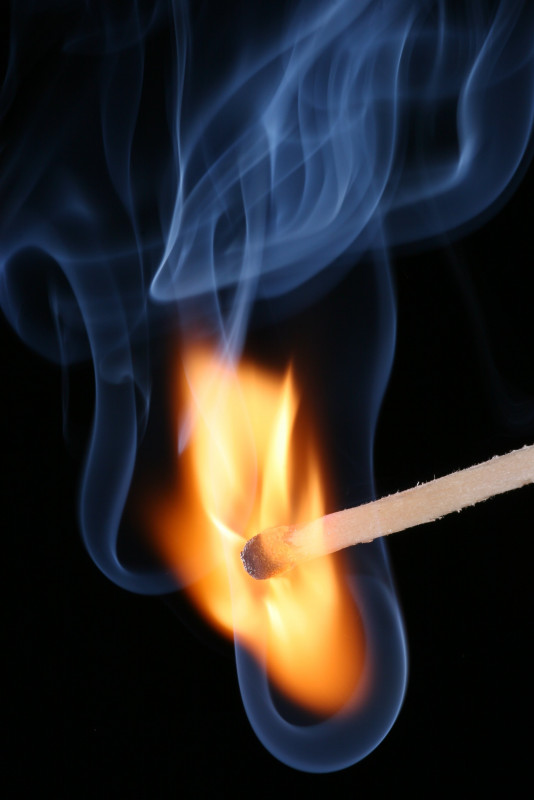A match is a tool used to start a fire, typically composed of a small wooden stick or stiff paper. One end is coated with a material that ignites through friction when struck against a surface. Wooden matches come in boxes, while paper matches are in matchbooks. The match head, the coated end, contains active ingredients and a binder. There are two main types: safety matches, which require a specific striking surface, and strike-anywhere matches, which can be lit on any frictional surface.
1901: Albright and Wilson begins making phosphorus sesquisulfide in US
In 1901, Albright and Wilson began manufacturing phosphorus sesquisulfide at their Niagara Falls, New York plant for the American market, even though American manufacturers continued using white phosphorus matches.
1901: Netherlands prohibits white phosphorus
In 1901, the Netherlands prohibited the use of white phosphorus in matches due to its dangerous effects.
1903: Jönköpings & Vulcans Tändsticksfabriks AB is named
By 1903, the Swedish match industry in Jönköping, which long held a virtual worldwide monopoly on safety matches, was called Jönköpings & Vulcans Tändsticksfabriks AB, now known as Swedish Match.
September 1906: Berne Convention banning white phosphorus in matches
In September 1906, the Berne Convention was reached in Bern, Switzerland. The agreement banned the use of white phosphorus in matches, requiring each country to pass laws prohibiting it.
1908: United Kingdom passes law prohibiting white phosphorus in matches
In 1908, the United Kingdom passed a law prohibiting the use of white phosphorus in matches, which would take effect after December 31, 1910.
December 1910: UK law prohibiting white phosphorus in matches takes effect
In the United Kingdom, a law passed in 1908 prohibiting the use of white phosphorus in matches came into effect after December 31, 1910.
1910: US Congress forbids interstate shipment of white phosphorus matches
In 1910, the United States Congress forbade the shipment of white phosphorus matches in interstate commerce. The Albright and Wilson Niagara Falls plant ceased production of the matches that year.
1913: United States places punitive tax on white phosphorus matches
In 1913, the United States did not ban white phosphorus matches outright but instead placed a "punitive tax" on them, effectively making their manufacture financially impractical.
1914: Canada bans white phosphorus matches
In 1914, Canada banned the use of white phosphorus in matches.
1917: Death of Carl Frans Lundström
In 1917, Carl Frans Lundström, who alongside his brother Johan Edvard Lundström, started a large-scale match industry in Jönköping, Sweden, died. Carl was born in 1823.
1925: China bans white phosphorus matches
In 1925, China banned the use of white phosphorus in matches.
1944: Safety matches classified as dangerous goods
In 1944, safety matches were classified as dangerous goods under "U.N. 1944, Matches, safety".
Mentioned in this timeline
The United States of America is a federal republic located...
India officially the Republic of India is a South Asian...
China officially the People's Republic of China PRC is an...
Japan is an East Asian island country situated in the...
Canada is a North American country the second largest in...
The Netherlands is a country located in Northwestern Europe and...
Trending

1 month ago Harry Styles' Influence: Celebrity Boyfriend Phenomenon, Grammy Inspiration, and Album of the Year Debate.

6 months ago Margaret Cho Claims Ellen DeGeneres Mistreated Her for Years, Calling Her 'Mean'.
6 months ago Florian Wirtz Reportedly Transfers from Leverkusen to Liverpool for 140 Million Euros

7 months ago Declan Rice returns against Newcastle; Havertz nearing return from hamstring injury at Arsenal.

6 months ago Pulisic's Gold Cup Controversy: Donovan's Criticism and Pochettino's Stance on Game Selection

6 months ago Deontay Wilder returns to boxing against Tyrell Herndon, coached by Don House.
Popular

XXXTentacion born Jahseh Dwayne Ricardo Onfroy was a controversial yet...

Ben Shapiro is a prominent American conservative political commentator media...

Candace Owens is an American conservative political commentator and author...

Stranger Things created by the Duffer Brothers is a popular...
The Kennedy Center Honors are annual awards recognizing individuals and...

William Franklin Graham III commonly known as Franklin Graham is...
